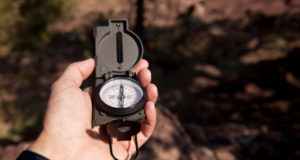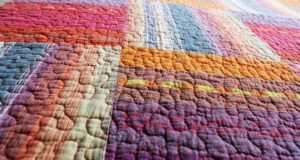|
Listen To The Article
|
 The great outdoors can be a wonderful place, full of beauty, peace, and majesty; however, it is still dangerous, even for the most experienced woodsmen. That is why it is important to carry a pocket-sized insurance policy with you wherever you go: your first-aid kit.
The great outdoors can be a wonderful place, full of beauty, peace, and majesty; however, it is still dangerous, even for the most experienced woodsmen. That is why it is important to carry a pocket-sized insurance policy with you wherever you go: your first-aid kit.
Having a first-aid kit doesn’t mean that you have to carry a $120 suitcase-sized kit that can address everything from a paper cut to Ebola. However, it is important to know the most common ailments and injuries that may occur on the trail. Also, you will need to know how to fix them or at least engage in damage control long enough to get to a hospital.
First, cuts and puncture wounds are the most common, especially because you are likely to be working with a blade all day long. The longer you handle a blade, the higher the percent chance you will experience an injury. Believe it or not, your best bet to dressing a smaller wound, such as an accidental knife injury, is using duct tape and a cotton cloth of some kind. If the wound continues to bleed, one way to make sure the blood clots is to pour common sugar directly on the wound. Be sure to consult additional materials on first aid, as this knowledge may save your life.
Other than the supplies mentioned above, it would be smart to also carry a small camp first-aid kit in your pack. This kit should have alcohol pads, anti-bacterial creams, adhesive bandages, and even pain-killing medications that could provide temporary relief.
Perhaps the most important knowledge of first aid you will ever have is to know when to head back to society or even call for help. While you might be able to “tough it out” for the next few days, it is often better to call it quits before any permanent damage is done, you risk infection, or you risk the loss of mobility. Especially if you are not a medical expert, it is always best to be safe, than sorry.
Navigation
It is very important to understand how to navigate in the woods, especially if your hunting and trapping takes you far from camp. It is very easy to get lost, if your camp is not based near an obvious landmark (mountain, stream, pond, lake, or other type of structure), especially if you do not have the necessary tools for proper navigation. Therefore, into whatever woods you decide to trek, it is always a good idea to come with a topographical map of the vicinity with a grid that has GPS coordinates and a compass.
The topographical map can help you know the area based on landmarks. Also, if you have a compass and understand how to use it, then the chances of losing your way during daylight are slim to none. For your purposes, it is smart to have a compass that will help you shoot a bearing, as this will help you orientate yourself if you are in a very large area. You will want more than just an “accessory compass,” or that compass on your watch, flashlight, keychain, etc. (Accessory compasses are useful for double-checking your primary compass, however.) In most cases, a mirror compass or prismatic compass will do what you need it to, as that will allow you to shoot precise bearings in the woods. Also, mirror-style compasses can also double as a signal mirror.
Before you explore a large patch of woods you do not know, practice with a small patch of woods that you know very well. There is no shortage of educational materials on the particulars of navigating with a map and compass online, and you will even be able to find maps just about any area on the Internet.
The Worst Case Scenario
You’re stuck. You’ve just broken your leg, you are violently sick, or that wound is really bleeding badly. You are now in a position to call for help, as getting back to society by yourself at this point is going to be difficult or impossible. What now?
Any good pack should have signaling devices that will assist in your rescue. Perhaps the best signaling devices you can use in this situation are a blaze orange tarp, a survival whistle, and a cell phone.
Again, we come to another rule of threes. If you are in trouble, and you need to be found, three blasts of anything would indicate to passers-by as being a call for help. Especially for folks with military or first responder experience, if they hear three strong blasts from a whistle, they will likely come searching for the source. So, if you are in the woods, wounded, but with a rifle, then point the muzzle in a safe direction and unleash three shots in rapid succession. You should do so once every thirty minutes until you are found (or until you are down to your last three rounds).
Even if you are carrying a firearm, you should still pack a whistle, as those do not require exhaustible rounds. Your voice can wear out very quickly, so relying on your ability to cry for help is not a good idea; however, nothing is easier or will pierce through the thick forest like a blast from a whistle.
Blaze orange is universally understood for being the “look at me!” color. If you are being sought after by emergency personnel, they will be able to spot you from a mile off if you are under a blaze orange emergency shelter tarp. Also, having blaze orange bandanas, duct tape, and even 550 paracord will help your situation.
Last, sending up a smoke signal is a fantastic way to be found. The key is to burn green leaves, which will send up billows of white smoke. White smoke in the summer works best for visibility, contrasting against the dark greens and browns of the woods. However, that doesn’t always work in the winter, especially if snow has covered the landscape. In that case, burn synthetic materials, which will yield black smoke.
Overall, the best way to be found (if you have cell phone reception) is to call emergency services and give them your GPS coordinates (based on your map). Then you can build a signal fire, utilizing green leaves for white smoke, and also setup your blaze orange tarp for additional visibility. As you wait, give three whistle blasts every half-hour until you are found. Your camp will have become a giant beacon, which will be very easy for first responders to locate.
If you do not have cell phone service, then do not start your signal fire just yet, but commence with whistle blasts immediately. Once you catch wind of approaching first responders, light the signal fire, and you will most likely be found.
This concludes The City Slicker’s Guide to Bushcraft Methods. If you learned anything from this series, we hope that you understood the necessity for increasing your knowledge and practice. You will not become proficient overnight, but if you keep up with research and spend time in the dirt, then you will find yourself an accomplished bushcrafter before you know it. Good luck, and be safe!
 Off The Grid News Better Ideas For Off The Grid Living
Off The Grid News Better Ideas For Off The Grid Living




